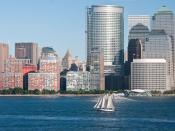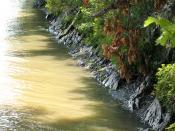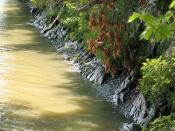"From 1947 to 1977, GE plants north of Albany poured more than 1.3 million pounds of PCBs into the upper Hudson and PCBs continue to leak out of two GE plants." PCBs are chemicals used for a wide variety of industrial purposes and are linked to but not proven to cause reproductive problems, low birth weight, reduced ability to fight infections and learning problems in humans. In August of 2001, the Environmental Protection Agency decided to remove over one hundred thousand pounds of PCBs from a 40-mile stretch by means of dredging the river. Dredging the Hudson River in this area may have many negative effects on those who live in the surrounding areas and those who live down river. These include stirring up the PCBs embedded in the sediment at the bottom of the river and the problem of removing this dug up material to another site. Therefore dredging may cause more problems than it is solving.
More observations and studies need to be conducted to find a more effective way to remove PCBs from the Hudson River. Once a worthwhile and effective solution is discovered it is time to clean up the Hudson, but until them the status quo should be upheld.
Over a period of thirty years GE was allowed to release around 1.3 million pounds of PCBs into the Hudson River. This created a two hundred mile stretch of the river from Fort Edward, NY to New York City that is contaminated. Since 1977 these PCBs have been accumulating in fish and in the sediment at the bottom of the Hudson. This seems to be a serious environmental issue in the states of New York and New Jersey, especially in the areas directly on the Hudson. PCBs contaminate fish in the river. Those who eat these...


